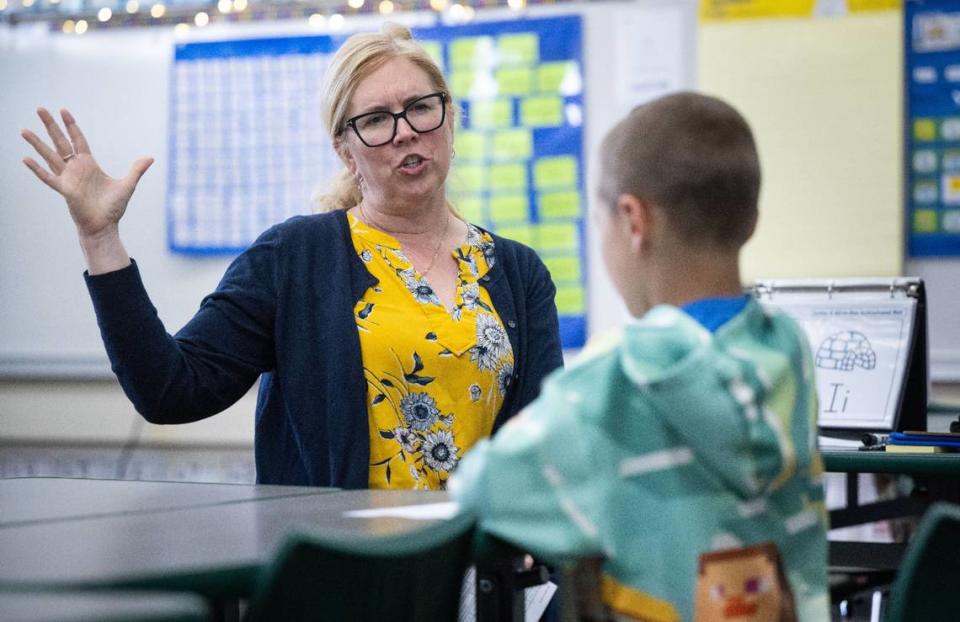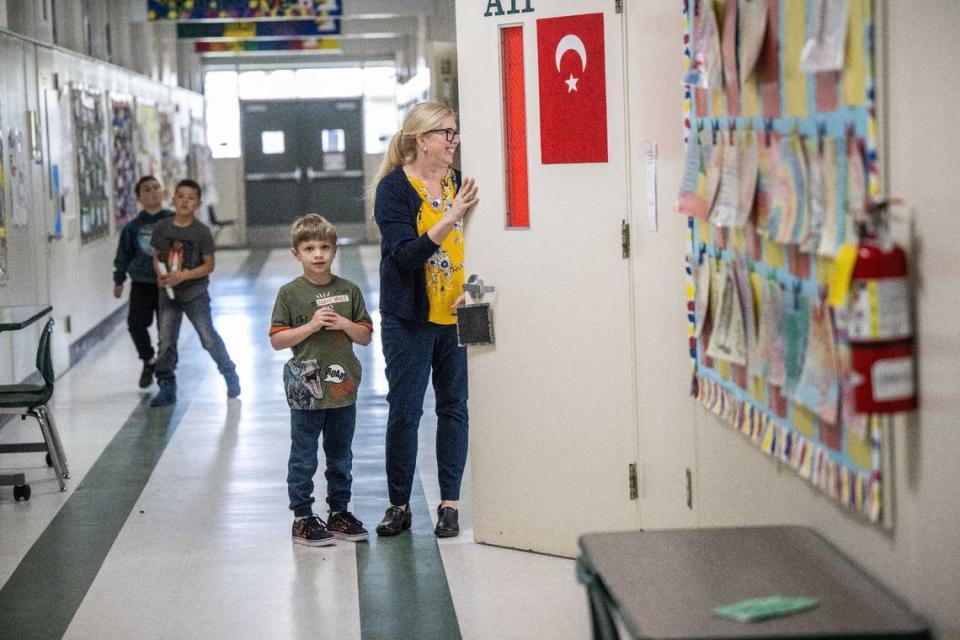Sacramento-area teachers still working to fill student learning gaps from pandemic
Years after the coronavirus pandemic began and campuses reopened, school districts across Sacramento began seeing the full consequences of learning gaps among K-12 students.
State testing results and online tools measuring success showed school leaders where students were facing dramatic setbacks. And administrators began working to close those gaps with COVID dollars and state funding.
Gov. Gavin Newsom’s 2021-22 budget provided California schools with $2.6 billion for tutoring and interventions. And while additional assistance has been promising for students, some educators want to ensure those programs don’t come to a halt when the funds dry up.
After the education finance law AB 130 allowed schools to expand learning programs, those institutions began to get creative with their approaches to address student needs.
For example, San Juan Unified allocated between $80,000 to $100,000 to each school to help with intervention after the pandemic began, said Thomas Kelly Elementary School Principal Josh Costa.
That funding helps pay for the district’s 150 instructional assistants, three social workers, five on-site counselors, and 38 intervention specialists.
Instructional assistants are placed in classrooms from transitional kindergarten through second grade. Third and fourth graders also receive in-class assistance.
Students who are most in need receive 150 minutes of additional instruction and intervention a week in the mornings before classes begin for the day. Those sessions are funded by resources and COVID dollars that Thomas Kelly Elementary distributes among its students in need.
Brittney Groess, an intervention teacher at the school with more than 16 years of experience, said the small group work is making a difference.

Groess offers her students pre-assessments and post assessments in reading and literacy for each of the six units she offers her small groups. On their post assessment tests, most students are scoring higher, she said. And those who don’t receive additional support and testing.
Schools use online assessment programs including i-Ready and Lexia, along with state testing to measure student performance.
“I pull each student individually one by one,” Groess said. “We see what they already know, and each child comes with individualized goals.”
Groess said it’s been exciting to see some of the school’s most vulnerable students accomplish those goals.
“One student really struggled last year to learn his letters and his sounds,” Groess said. “He sees me five days a week, and he was below third grade level. But now he has grown leaps and bounds and he can write words. It’s exciting to see that light bulb go off.”
Statewide concerns
The state’s standardized testing program, California Assessment of Student Performance and Progress, (CAASSP), restarted after taking a hiatus in 2019-20 due to the pandemic.
The results startled educators.
In 2019, 46% of San Juan Unified students met or exceeded state standards in English. In 2022, that number dropped to 42%, according to published test results.
Half of California’s students met or exceeded English standards in 2019, and that dropped to 47% in 2022.
In 2019, 37% of San Juan Unified students met or exceeded math standards. That number dropped to 29.5% in 2022.
About 40% of California students met or exceeded math standards in 2019, and that dropped to 33% in 2022.
Thomas Kelly Elementary wasn’t any different. From 2019 to 2022, English test results dropped by 3.5% and math test results dropped by 2.8%.
On-campus interventions key
Costa is optimistic, as he sees the progress from interventions.
Some interventions have been so effective, some students with special needs have joined general education classrooms. Plus some students who need additional resource teachers now see those teachers four days a week instead of five days.
Costa credits the work of Groess and others who work with students one-on-one and in small groups.
Research shows that lessons are most effective if they are done by a teacher or a paraprofessional – not a parent. And one-on-one tutoring or small group instructions have positive impacts, according to the study.
At Thomas Kelly Elementary, small group instruction before school takes place thanks to COVID relief dollars that districts are still spending down.

The program assists students with reading skills – a challenge that Thomas Kelly educators faced before the pandemic. The school receives Title I funding for its underserved student population.
About 60% of the student population at Thomas Kelly is socioeconomically disadvantaged, according to state records. About half of its student population scored below standard in English Language Arts, and 60% below standards in math.
Could money run out?
District officials are mindful that funding for interventions won’t last forever.
Nearly all of the funds are directly allocated to paying for full time employees. Most of the programs the district uses for intervention were already purchased by the district through Title I funding.
Rafael Martinez, who helps San Juan Unified principals allocate and budget their funding for academic use, said the district has been strategic with its funds.
“One of the things that I did as an English Language Arts coordinator was look at statewide studies and we saw there was an academic decline at the state level,” Martinez said. “We looked at how students were performing prior to pandemic. We did have student interventions, but the need is greater now.”
San Juan Unified identified three areas that are critical to keep intervention support, social emotional support and instructional assistants at schools.
“We are getting creative with how this is funded,” said San Juan Unified spokeswoman Raj Rai. “We recognize it and these programs are needed. And we will do what we can to make sure we can continue to provide that support.”

